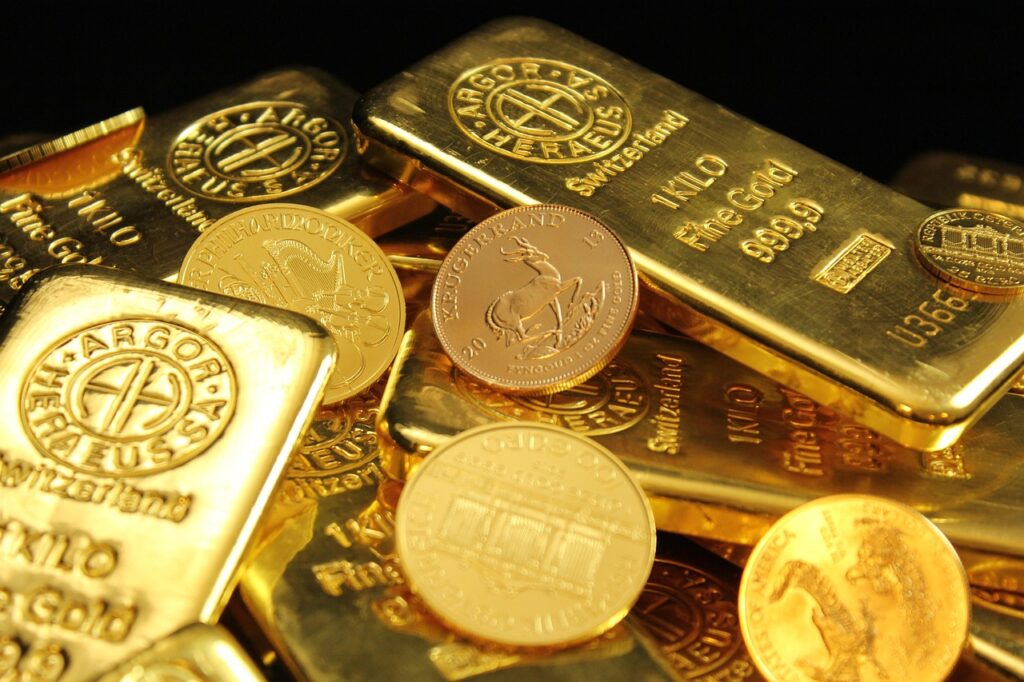Gold has surged past $4,000 (£2,985) an ounce, hitting a record high. Investors are racing to safeguard their money amid rising global instability and economic unease. The precious metal is experiencing its strongest rally since the 1970s. Prices have climbed by nearly one-third since April, when US President Donald Trump’s tariff measures disrupted international trade flows.
Markets shaken as US shutdown rattles confidence
The ongoing US government shutdown, now entering its second week, has fueled investor anxiety. Analysts say the delay in releasing vital economic data has deepened fears about the state of the world’s largest economy. Gold, known as a safe haven, tends to rise when markets face turmoil. On Wednesday afternoon in Asia, spot gold — the live market price for immediate delivery — reached over $4,036 an ounce. Gold futures, reflecting market sentiment, matched that level on 7 October. Futures contracts allow investors to lock in a future price for the metal.
Political deadlock gives gold a powerful lift
Christopher Wong, rates strategist at OCBC in Singapore, said the shutdown is a “tailwind for gold prices.” Ongoing political clashes over spending have driven investors to move their assets into safer territory. During Trump’s first term, gold rose nearly 4% during a month-long shutdown. Wong cautioned, however, that if the deadlock ends quickly, prices could ease again.
Analysts caught off guard by the rapid surge
Heng Koon How, head of markets strategy at UOB Bank, called gold’s recent rise “unprecedented.” He said the rally has gone far beyond market expectations, boosted by a weaker US dollar and a flood of new retail investors. Many buyers are turning to exchange-traded funds (ETFs) instead of physical gold. The World Gold Council said $64 billion has already been poured into gold ETFs this year — a record high.
Gold demand soars from families to financial giants
Gregor Gregersen, founder of Silver Bullion, said customer numbers have more than doubled in the past year. He noted that individuals, banks, and wealthy families increasingly see gold as protection from economic and political chaos. “Most of our clients are long-term holders,” Gregersen said, adding that many keep their gold for over four years. “Gold will eventually fall, but in this environment, I expect it to rise for at least five more years,” he predicted.
Risks remain despite record-breaking prices
Experts warn that gold’s impressive rise could face sharp corrections. OCBC’s Wong said prices may slip if interest rates climb or global tensions ease. In April, gold dropped around 6% after Trump decided not to dismiss Federal Reserve Chair Jerome Powell. “Gold serves as a hedge against uncertainty, but that hedge can unwind quickly,” Wong said.
In 2022, gold fell from $2,000 to $1,600 an ounce after the Federal Reserve raised rates to tame inflation following the pandemic, Heng recalled. A sudden resurgence in inflation could again push the Fed to act, threatening gold’s rally.
Trump’s attacks on the Fed intensify uncertainty
Wong said expectations that the Federal Reserve will soon lower interest rates are helping gold’s appeal. But Trump’s growing criticism of the central bank is shaking confidence. He has accused Powell of moving too slowly and tried to fire Fed Governor Lisa Cook. Wong warned that such actions “can weaken trust in the Fed’s ability to act as a credible inflation-fighting authority.” In this tense global climate, he added, gold’s status as a shield against instability “is more important than ever.”


